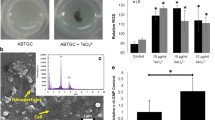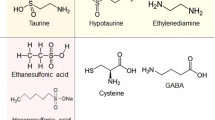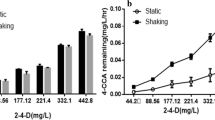Abstract
The bis-(3′-5′)-cyclic dimeric guanosine monophosphate (c-di-GMP) is a ubiquitous second messenger that determines bacterial lifestyle between the planktonic and biofilm modes of life. Although the role of c-di-GMP signaling in biofilm development and dispersal has been extensively studied, how c-di-GMP signaling influences environmental bioprocess activities such as biodegradation remains unexplored. To elucidate the impacts of elevating c-di-GMP level on environmental bioprocesses, we constructed a Comamonas testosteroni strain constitutively expressing a c-di-GMP synthase YedQ from Escherichia coli and examined its capability in biofilm formation and biodegradation of 3-chloroaniline (3-CA). The high c-di-GMP strain exhibited an increased binding to Congo red dye, a decreased motility, and an enhanced biofilm formation capability. In planktonic cultures, the strain with an elevated c-di-GMP concentration and the wild type could degrade 3-CA comparably well. However, under batch growth conditions with a high surface to volume ratio, an elevated c-di-GMP concentration in C. testosteroni significantly increased the contribution of biofilms in 3-CA biodegradation. In continuous submerged biofilm reactors, C. testosteroni with an elevated c-di-GMP level exhibited an enhanced 3-CA biodegradation and a decreased cell detachment rate. Taken together, this study provides a novel strategy to enhance biofilm-based biodegradation of toxic xenobiotic compounds through manipulating bacterial c-di-GMP signaling.




Similar content being viewed by others
References
Andersson S, Kuttuva Rajarao G, Land CJ, Dalhammar G (2008) Biofilm formation and interactions of bacterial strains found in wastewater treatment systems. FEMS Microbiol Lett 283(1):83–90
Ariesyady HD, Ito T, Okabe S (2007) Functional bacterial and archaeal community structures of major trophic groups in a full-scale anaerobic sludge digester. Water Res 41(7):1554–1568
Boon N, Goris J, De Vos P, Verstraete W, Top EM (2000) Bioaugmentation of activated sludge by an indigenous 3-chloroaniline-degrading Comamonas testosteroni strain, I2gfp. Appl Environ Microbiol 66(7):2906–2913
Boon N, De Gelder L, Lievens H, Siciliano SD, Top EM, Verstraete W (2002) Bioaugmenting bioreactors for the continuous removal of 3-chloroaniline by a slow release approach. Environ Sci Technol 36(21):4698–4704
Boon N, Top EM, Verstraete W, Siciliano SD (2003) Bioaugmentation as a tool to protect the structure and function of an activated-sludge microbial community against a 3-chloroaniline shock load. Appl Environ Microbiol 69(3):1511–1520
Bossier P, Verstraete W (1996) Comamonas testosteroni colony phenotype influences exopolysaccharide production and coaggregation with yeast cells. Appl Environ Microbiol 62(8):2687–2691
Cao B, Loh KC (2008) Catabolic pathways and cellular responses of Pseudomonas putida P8 during growth on benzoate with a proteomics approach. Biotechnol Bioeng 101(6):1297–1312
Cao B, Nagarajan K, Loh K (2009) Biodegradation of aromatic compounds: current status and opportunities for biomolecular approaches. Appl Microbiol Biotechnol 85(2):207–228
Cao B, Majors PD, Ahmed B, Renslow RS, Silvia CP, Shi L, Kjelleberg S, Fredrickson JK, Beyenal H (2012) Biofilm shows spatially stratified metabolic responses to contaminant exposure. Environ Microbiol 14(11):2901–2910
Chen CY, Nace GW, Irwin PL (2003) A 6 × 6 drop plate method for simultaneous colony counting and MPN enumeration of Campylobacter jejuni, Listeria monocytogenes, and Escherichia coli. J Microbiol Methods 55(2):475–479
Da Re S, Ghigo J (2006) A CsgD-independent pathway for cellulose production and biofilm formation in Escherichia coli. J Bacteriol 188(8):3073–3087
Dejonghe W, Berteloot E, Goris J, Boon N, Crul K, Maertens S, Hofte M, De Vos P, Verstraete W, Top EM (2003) Synergistic degradation of linuron by a bacterial consortium and isolation of a single linuron-degrading Variovorax strain. Appl Environ Microbiol 69(3):1532–1541
Ding Y, Peng N, Du Y, Ji L, Cao B (2014) Disruption of putrescine biosynthesis in Shewanella oneidensis enhances biofilm cohesiveness and performance in Cr(VI) immobilization. Appl Environ Microbiol 80(4):1498–1506
Donlan RM (2002) Biofilms: microbial life on surfaces. Emerg Infect Dis 8(9):881–890
Ducey TF, Vanotti MB, Shriner AD, Szogi AA, Ellison AQ (2010) Characterization of a microbial community capable of nitrification at cold temperature. Bioresour Technol 101(2):491–500
Flemming H-C, Wingender J (2010) The biofilm matrix. Nat Rev Microbiol 8(9):623–633
Friedman L, Kolter R (2004) Genes involved in matrix formation in Pseudomonas aeruginosa PA14 biofilms. Mol Microbiol 51(3):675–690
Gjermansen M, Ragas P, Tolker-Nielsen T (2006) Proteins with GGDEF and EAL domains regulate Pseudomonas putida biofilm formation and dispersal. FEMS Microbiol Lett 265(2):215–224
Gjermansen M, Nilsson M, Yang L, Tolker-Nielsen T (2010) Characterization of starvation-induced dispersion in Pseudomonas putida biofilms: genetic elements and molecular mechanisms. Mol Microbiol 75(4):815–826
Gupta K, Liao J, Petrova OE, Cherny K, Sauer K (2014) Elevated levels of the second messenger c-di-GMP contribute to antimicrobial resistance of Pseudomonas aeruginosa. Mol Microbiol 92(3):488–506
Haagensen JA, Hansen SK, Johansen T, Molin S (2002) In situ detection of horizontal transfer of mobile genetic elements. FEMS Microbiol Ecol 42(2):261–268
Hall-Stoodley L, Costerton JW, Stoodley P (2004) Bacterial biofilms: from the natural environment to infectious diseases. Nat Rev Microbiol 2(2):95–108
Hengge R (2009) Principles of c-di-GMP signalling in bacteria. Nat Rev Microbiol 7(4):263–273
Henriques ID, Holbrook RD, Kelly RT II, Love NG (2005) The impact of floc size on respiration inhibition by soluble toxicants—a comparative investigation. Water Res 39(12):2559–2568
Hickman JW, Tifrea DF, Harwood CS (2005) A chemosensory system that regulates biofilm formation through modulation of cyclic diguanylate levels. Proc Natl Acad Sci U S A 102(40):14422–14427
Jenal U, Malone J (2006) Mechanisms of cyclic-di-GMP signaling in bacteria. Annu Rev Genet 40:385–407
Juang YC, Adav SS, Lee DJ, Lai JY (2010) Influence of internal biofilm growth on residual permeability loss in aerobic granular membrane bioreactors. Environ Sci Technol 44(4):1267–1273
Kearney PC, Kaufman DD (1988) Herbicides: chemistry, degradation, and mode of action, vol 3. CRC Press, New York
Kim L, Pagaling E, Zuo YY, Yan T (2014) Impact of substratum surface on microbial community structure and treatment performance in biological aerated filters. Appl Environ Microbiol 80(1):177–183
Kirisits MJ, Prost L, Starkey M, Parsek MR (2005) Characterization of colony morphology variants isolated from Pseudomonas aeruginosa biofilms. Appl Environ Microbiol 71(8):4809–4821
Król J, Penrod J, McCaslin H, Rogers L, Yano H, Stancik A, Dejonghe W, Brown C, Parales R, Wuertz S (2012) Role of IncP-1β plasmids pWDL7::rfp and pNB8c in chloroaniline catabolism as determined by genomic and functional analyses. Appl Environ Microbiol 78(3):828–838
Kuchma S, Ballok A, Merritt J, Hammond J, Lu W, Rabinowitz J, O’Toole GA (2010) Cyclic-di-GMP-mediated repression of swarming motility by Pseudomonas aeruginosa: the pilY1 gene and its impact on surface-associated behaviors. J Bacteriol 192(12):2950–2964
Linares M, Pruneda-Paz JL, Reyna L, Genti-Raimondi S (2008) Regulation of testosterone degradation in Comamonas testosteroni. J Steroid Biochem Mol Biol 112(1–3):145–150
Liu Z, Yang H, Huang Z, Zhou P, Liu S-J (2002) Degradation of aniline by newly isolated, extremely aniline-tolerant Delftia sp. AN3. Appl Microbiol Biotechnol 58(5):679–682
Louvet J-N, Giammarino C, Potier O, Pons M-N (2010) Adverse effects of erythromycin on the structure and chemistry of activated sludge. Environ Pollut 158(3):688–693
Luo H, Xu P, Ren Z (2012) Long-term performance and characterization of microbial desalination cells in treating domestic wastewater. Bioresour Technol 120:187–193
Lyons CD, Katz S, Bartha R (1984) Mechanisms and pathways of aniline elimination from aquatic environments. Appl Environ Microbiol 48(3):491–496
Ma Y, Zhang Y, Zhang J, Chen D, Zhu Y, Zheng H, Wang S, Jiang C, Zhao G, Liu S (2009) The complete genome of Comamonas testosteroni reveals its genetic adaptations to changing environments. Appl Environ Microbiol 75(21):6812–6819
Mah TFC, O’Toole GA (2001) Mechanisms of biofilm resistance to antimicrobial agents. Trends Microbiol 9(1):34–39
Murray TS, Kazmierczak BI (2008) Pseudomonas aeruginosa exhibits sliding motility in the absence of type IV pili and flagella. J Bacteriol 190(8):2700–2708
Nicastro GG, Kaihami GH, Pereira TO, Meireles DA, Groleau MC, Déziel E, Baldini RL (2014) Cyclic-di-GMP levels affect Pseudomonas aeruginosa fitness in the presence of imipenem. Environ Microbiol 16(5):1321–1333
Nicolella C, van Loosdrecht MCM, Heijnen SJ (2000) Particle-based biofilm reactor technology. Trends Biotechnol 18(7):312–320
Parsek MR, Greenberg E (2005) Sociomicrobiology: the connections between quorum sensing and biofilms. Trends Microbiol 13(1):27–33
Principi P, Villa F, Bernasconi M, Zanardini E (2006) Metal toxicity in municipal wastewater activated sludge investigated by multivariate analysis and in situ hybridization. Water Res 40(1):99–106
Pruneda-Paz JL, Linares M, Cabrera JE, Genti-Raimondi S (2004) TeiR, a LuxR-type transcription factor required for testosterone degradation in Comamonas testosteroni. J Bacteriol 186(5):1430–1437
Reardon KF, Mosteller DC, Rogers JDB (2000) Biodegradation kinetics of benzene, toluene, and phenol as single and mixed substrates for Pseudomonas putida F1. Biotechnol Bioeng 69(4):385–400
Sanchez-Torres V, Hu H, Wood TK (2011) GGDEF proteins YeaI, YedQ, and YfiN reduce early biofilm formation and swimming motility in Escherichia coli. Appl Microbiol Biotechnol 90(2):651–658
Simm R, Morr M, Kader A, Nimtz M, Romling U (2004) GGDEF and EAL domains inversely regulate cyclic di-GMP levels and transition from sessility to motility. Mol Microbiol 53(4):1123–1134
Singh R, Paul D, Jain RK (2006) Biofilms: implications in bioremediation. Trends Microbiol 14(9):389–397
Sivakumar K, Wang VB, Chen X, Bazan GC, Kjelleberg S, Loo SCJ, Cao B (2014) Membrane permeabilization underlies the enhancement of extracellular bioactivity in Shewanella oneidensis by a membrane-spanning conjugated oligoelectrolyte. Appl Microbiol Biotechnol. doi:10.1007/s00253-014-5973-3
Snaidr J, Amann R, Huber I, Ludwig W, Schleifer K-H (1997) Phylogenetic analysis and in situ identification of bacteria in activated sludge. Appl Environ Microbiol 63(7):2884–2896
Spangler C, Böhm A, Jenal U, Seifert R, Kaever V (2010) A liquid chromatography-coupled tandem mass spectrometry method for quantitation of cyclic di-guanosine monophosphate. J Microbiol Methods 81(3):226–231
Spurbeck RR, Tarrien RJ, Mobley HL (2012) Enzymatically active and inactive phosphodiesterases and diguanylate cyclases are involved in regulation of motility or sessility in Escherichia coli CFT073. MBiol 3(5):e00307–e00312
Suja E, Nancharaiah YV, Venugopalan VP (2012) p-Nitrophenol biodegradation by aerobic microbial granules. Appl Biochem Biotechnol 167(6):1569–1577
Thangaraj K, Kapley A, Purohit HJ (2008) Characterization of diverse Acinetobacter isolates for utilization of multiple aromatic compounds. Bioresour Technol 99(7):2488–2494
Ueda A, Wood TK (2009) Connecting quorum sensing, c-di-GMP, pel polysaccharide, and biofilm formation in Pseudomonas aeruginosa through tyrosine phosphatase TpbA (PA3885). PLoS Pathog 5(6):e1000483
Valle A, Bailey MJ, Whiteley AS, Manefield M (2004) N-acyl-l-homoserine lactones (AHLs) affect microbial community composition and function in activated sludge. Environ Microbiol 6(4):424–433
Wakimoto N, Nishi J, Sheikh J, Nataro JP, Sarantuya J, Iwashita M, Manago K, Tokuda K, Yoshinaga M, Kawano Y (2004) Quantitative biofilm assay using a microtiter plate to screen for enteroaggregative Escherichia coli. Am J Trop Med Hyg 71(5):687–690
Wan C, Zhang P, Lee D-J, Yang X, Liu X, Sun S, Pan X (2013) Disintegration of aerobic granules: role of second messenger cyclic di-GMP. Bioresour Technol 146:330–335
Willems A, Vos P (2006) Comamonas. In: Dworkin M, Falkow S, Rosenberg E, Schleifer K-H, Stackebrandt E (eds) The prokaryotes. Springer, New York, pp 723–736
Wolfe AJ, Visick KL (2008) Get the message out: cyclic-Di-GMP regulates multiple levels of flagellum-based motility. J Bacteriol 190(2):463–475
Ye L, Shao M, Zhang T, Tong AHY, Lok S (2011) Analysis of the bacterial community in a laboratory-scale nitrification reactor and a wastewater treatment plant by 454-pyrosequencing. Water Res 45(15):4390–4398
Yong Y, Zhong J (2013) Regulation of aromatics biodegradation by rhl quorum sensing system through induction of catechol meta-cleavage pathway. Bioresour Technol 136:761–765
Zhang T, Shao M, Ye L (2011) 454 Pyrosequencing reveals bacterial diversity of activated sludge from 14 sewage treatment plants. ISME J 6(6):1137–1147
Zhang Y, Ng CK, Cohen Y, Cao B (2014) Cell growth and protein expression of Shewanella oneidensis in biofilms and hydrogel-entrapped cultures. Mol Biosyst 10(5):1035–1042
Acknowledgments
The c-di-GMP quantification was carried out with the help of Dr. Peter Imre Benke and Professor Sanjay Swarup in the Metabolomics Laboratory of the Singapore Centre on Environmental Life Sciences Engineering (SCELSE). We thank Dr. Liang Yang for providing the plasmids used in this study. We also thank William Jak Soon Phang and Hari Seshan for their assistance. This research was supported by the National Research Foundation and Ministry of Education Singapore under its Research Centre of Excellence Programme, SCELSE (M4330005.C70) and a Start-up Grant (M4080847.030) from the College of Engineering, Nanyang Technological University, Singapore. The authors thank the Singapore Ministry of Education for providing research scholarship to Yichao Wu (Grant No. MOE2011-T2-2-035, ARC 3/12).
Author information
Authors and Affiliations
Corresponding author
Electronic supplementary material
Below is the link to the electronic supplementary material.
ESM 1
(PDF 261 kb)
Rights and permissions
About this article
Cite this article
Wu, Y., Ding, Y., Cohen, Y. et al. Elevated level of the second messenger c-di-GMP in Comamonas testosteroni enhances biofilm formation and biofilm-based biodegradation of 3-chloroaniline. Appl Microbiol Biotechnol 99, 1967–1976 (2015). https://doi.org/10.1007/s00253-014-6107-7
Received:
Revised:
Accepted:
Published:
Issue Date:
DOI: https://doi.org/10.1007/s00253-014-6107-7




